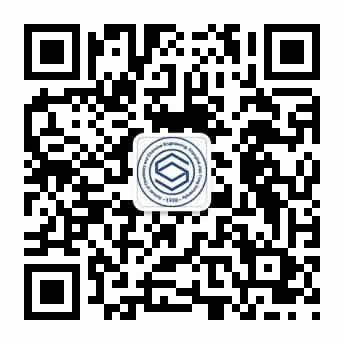TITLE: Development of Polymeric Particles for Cancer Nanomedicine
SPEAKER: Dr. Rong Tong, Massachusetts Institute of Technology; Children’s Hospital Boston, Harvard Medical
TIME: 20 May(Wednesday),AM10:00
LOCATION: Five-floor Lecture Hall, Chemistry Building A (化学A楼演讲厅)
INVITER: Prof. Xinyuan Zhan and Prof.Yongfeng Zhou
Abstract: Controlled release technology is expected to have a profound impact in many medical fields including oncology. The incorporation of chemotherapeutic agents in nanoparticle delivery vehicles has improved drug solubility, reduced clearance, and enhanced therapeutic effectiveness. With controlled release nanoparticle systems, a single dose can sustain drug levels within the desired therapeutic range for long periods in various diseases. However, currently approved nanomedicines provide modest survival benefits for patients, in part because of poor tumor penetration. Physiological barriers, such as the dense interstitial collagen matrix, hinder the delivery of drugs throughout the entire tumor. In addition, many nanoparticulate systems often suffer from translational problem through bench to clinical trials, due in part to uncontrolled formulation (e.g. low drug loading) that leads to modest preclinical efficacy.
In this talk, I will present efforts that address some of those critical problems in nanomedicine. First, a controlled nanoparticulate formulation using drug-polymer conjugates will be introduced: multifunctional drugs are conjugated onto the polymer through one specific functional group with high drug loading up to 30 wt% for various drugs with controlled particle sizes. Secondly, I will present a photo-switching nanoparticulate system that uses light as the remote means of triggering both on-demand drug release and reversible changes in particle volume (from 130 to 40 nm) to enhance tissue penetration. These photo-switchable nanoparticles provide spatio-temporal control of drug release and enhanced tissue penetration, useful properties in many disease states including cancers. For the first time, the remotely light-triggered nanoparticulate drug delivery system shows preclinical benefits that enable repetitive dosing from a single administration with improved delivery efficacy throughout tumors.
Biography: Rong Tong received his Ph.D. degree in Materials Science and Engineering from the University of Illinois at Urbana-Champaign in 2010, working on the synthesis and formulation of novel nanomedicines for targeted cancer therapy. Currently Rong is a postdoctoral fellow at both Massachusetts Institute of Technology (Langer lab) and Harvard Medical School (Kohane lab), and will become assistant professor at Virginia Tech in fall 2015. Rong’s research interests include bioconjugate chemistry, nanomedicine, biomaterials and targeted cancer therapy. He is the recipient of the Siteman Center for Cancer Nanotechnology Fellowship (2007), Racheff-Intel Award (2009), and American Chemical Society AkzoNobel Award in polymer chemistry (2010).
Selected Publications:
1. Tong, R.; Tang, L.; Ma, L.; Tu, C.; Baumgartner, R.; Cheng, J. \"Smart chemistry in polymeric nanomedicines\", Chemical Society Reviews, 2014, 43, 6982-7012.
2. Tong, R.; Chiang, H. H.; Kohane, D. S. “Photoswitchable nanoparticles for in vivo cancer chemotherapy”, Proceedings of the National Academy of Sciences of the U. S. A. 2013, 110, 19048-19053. Highlighted by Chemical and Engineering News
3. Tong, R.; Gabrielson, N. P.; Fan, T. M.; Cheng, J. \"Polymeric nanomedicine based on poly(lactide) and poly(lactic/glycolic acid)\", Current Opinion in Solid State and Materials Science, 2013, 16, 323-332.
4. Tong, R.; Hemmati, H. D.; Langer, R. S.; Kohane, D. S. “Photoswitchable nanoparticles for triggered drug delivery”, Journal of American Chemical Society, 2012, 134, 8848-8855. Selected as the journal cover. Highlighted by Chemical and Engineering News, Nature News, JACS spotlights.
5. Tong, R.; Cheng, J. “Efficient regioselective O-acylation of therapeutic agents mediated by zinc catalyst for bioconjugation and drug delivery”, Chemical Science, 2012, 3, 2234-2239.
6. Tong, R.; Cheng, J. “Ring-opening polymerization mediated-controlled formulation of polylactide nanoparticles”, Journal of American Chemical Society, 2009, 131, 4744-4754.
7. Tong, R.; Cheng, J. “Paclitaxel-initiated, controlled polymerization of lactide for the formulation of polymeric nanoparticulate delivery vehicles”, Angewandte Chemie International Edition, 2008, 47, 4830-4834. Highlighted by Alliance for Nanotechnology in Cancer, National Cancer Institute, NIH.



